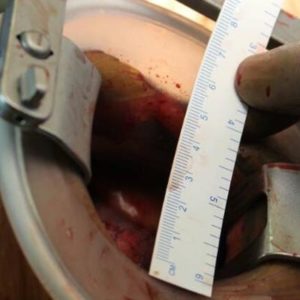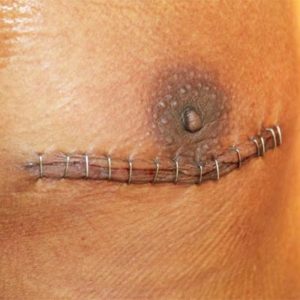In this article we will look into what is Minimally Invasive Cardiac Surgery (MICS), why its different from traditional Heart Bypass Surgery & its benefits.
Our heart fills oxygen in the blood (with the help of the lungs) and supplies blood which is rich in oxygen and other nutrients, to the rest of our body. This function is a strenuous non-stop activity. The already worked-up heart is further burdened with our misguided lifestyle choices. These could be the ill eating habit, irregular sleep/work patterns, or, ignorance or negligence towards wellness and fitness.
Given the above situation, many a times the heart develops a variety of concerns. It could be vascular (arteries and veins which carry blood) diseases or valve (which separates the four chambers of the heart to direct the blood flow) diseases, or more than that. Any of these conditions could be stressful, leading to shortness of breath, chest pain, blood clotting, irregular heartbeat. And, at times it could be fatal.
Traditionally cardiac surgeons have been correcting these conditions through open heart surgery. The procedure requires the doctor to open up the chest and the breastbone to access the heart and operate on it.
It is more than a decade that Minimally Invasive Cardiac Surgery (MICS) has been developed. As the name suggest, it requires minimal (small) incision (opening) on the body to perform the complete surgery. This method has revolutionised performance of cardiac surgeries. The doctor accesses the heart through few small incisions without cutting any bone, by only splitting the muscle. The given table will help you understand the difference between open heart and MICS


MICS – Bypass Surgery (CABG) through 5 cm Cut
Minimally Invasive Cardiac Surgery(MICS) vs Traditional Surgery
| MICS Surgery (Modern) | Open Heart Surgery (Traditional) |
| Small 2 to 3-inch incision, no bone separation | Opening of full chest, bone separation required |
| 3 to 5 days hospitalisation | 7 to 9 days hospitalisation |
| Recovery in 10 days | Recovery generally takes about two months or more |
| No use of heart-lung machine | Heart-lung machine is a must |
| Reduced possibility of infections, ideal for old, diabetic patients | High risk of infection |
| Smaller incisions and fewer scars | Deep scars |
| Less bleeding, less blood transfusion | More bleeding, more blood transfusion needed |
| Less pain and discomfort after surgery | Noticeable pain & discomfort after surgery |
| Less trauma to the breastbone – improved breathing | May affect breathing as breastbone healing is time-consuming |
| High hospitalisation cost, however, balances due to shorter stay | Low hospitalisation cost |
Different Treatments/Procedures under Minimally Invasive Cardiac Surgery(MICS)
As stated earlier, MICS can treat many kinds of heart complexities. This section covers the following treatments:
- Coronary Artery Bypass Grafting(CABG)
- Mitral Valve Repair & Replacement
- Aortic Valve Repair & Replacement
- Bentall Procedure – Replacement of Aortic Valve, Aortic Root & Ascending Aorta
- David’s Procedure – Replacement of Aortic Root
Coronary Artery Bypass Grafting (CABG Surgery)
The coronary arteries (a type of arteries) which supply oxygen filled blood to the heart gets blocked by a waxy substance called plaque. It results into several heart diseases which could lead to heart failure. Here, the surgeon replaces the blocked, damaged artery(ies) with a healthy artery taken from another part of your body. This process is heart bypass surgery, also known as CABG: coronary artery bypass grafting. The surgery when performed using Minimally Invasive Cardiac Surgery method, is called MICS CABG.
Mitral Valve Repair & Replacement
The mitral valve is one of the four valves in the heart. Its function is to control blood flow on the left side of the heart, between upper and lower chambers. A repair surgery is required when the valve loosens up and is unable to control the blood flow. At times this loosening up is severe, and there are times when the valve hardens. Under both these conditions, a replacement surgery is required.
Aortic Valve Repair & Replacement
The aortic valve is one of the four valves in the heart. It controls blood flow between the aorta and the left lower chamber. The valve needs to be repaired when it is enlarged or ruptured, causing blood leakage. Replacement is required when the enlargement or rupture is severe, or the valve hardens, or in cases where instead of three cusps (doors), the valve has only two, by birth.
Bentall Procedure – Replacement of Aortic Valve, Aortic Root & Ascending Aorta
Bentall procedure is a surgery to replace the diseased parts of the aorta (carries oxygenated blood to all the body parts). It could be aortic root, valve or ascending aorta. This treatment is advised in case of aortic valve leakage, aortic inner wall weakness, enlargement of the aorta, or when layers of the aortic wall separate. The two coronary arteries attached to the aorta are separated. The section of the aorta which is diseased is removed. An artificial graft is sutured in the placed of the original part. Separated coronary arteries are sutured back to the aorta. On completion, the incisions made in the chest to access the aorta are carefully sutured and bandaged.
David’s Procedure – Replacement of Aortic Root
David’s procedure is a surgery where the aortic root is replaced without removing the aortic valve. Similar to Bentall procedure, the two coronary arteries attached to the aorta are separated. The diseased section of the aorta is removed except the valve tissues. These valve tissues are sutured to the artificial graft and separated coronary arteries are sutured back to the aorta. David’s procedure retains the natural valve and eliminates the possibility of administering blood thinners to the patient for their entire life. On completion, the incisions made in the chest to access the aorta are carefully sutured and bandaged.
FAQ’s on Minimally Invasive Cardiac Surgery (MICS)
1) What is Minimally Invasive Cardiac Surgery (MICS)?
It is a technique where entire heart operation is performed through small 2-inch openings. The opening is either at the side or middle of chest.
2) How is it different from open heart surgery?
In an open heart surgery, the breastbone is separated. Because of this recovery takes more time, up to two months or more. Whereas, MICS is performed through small openings. Bones remain untouched, and therefore healing is much faster in about ten days.
3) How soon can I get back to work?
In the case of MICS, you are hospitalised only for two days. Immediately after the surgery, your doctor will ask you to move around. Most of the time patients can get back to work or normal chorus in 10 days.
4) Can multiple blockages be treated in one surgery?
Yes, multiple blockages can be treated in one MICS. You need not get operated multiple times. However, it is not a rule that all patients with this condition can undergo MICS. Patients with a poor heart are unsuitable for the procedure, and their doctors are the best decision makers.
5) I am a diabetic patient; can I undergo MICS?
MICS could be the desired option for you, as the chances of post-surgery infection are minimal in this procedure. However, the final decision can be taken by your doctor based on the quality of your vessels.
6) I smoke, can I undergo MISC?
In fact, MICS could be the desired option for you. However, the final decision can be taken by your doctor based on the condition of your lungs and may be after consulting your doctor who would be treating you for any respiratory issues
7) What are the risks of infection associated with MICS?
The risk of infection is minimal in MICS. It is simply because of the incisions; that is the opening done on the chest is small in size. At the same time, MICS requires muscle separation only, the bones are not separated, and the healing is faster.
8) Does the heart keep on working during the operation?
In OPCAB (Beating Heart Surgery) procedure there is no need to put the heart on an external machine. External pump support is rarely required, only in cases where the heart is weak. Under normal circumstances, the surgery is performed on the beating heart, and that is how it should be.